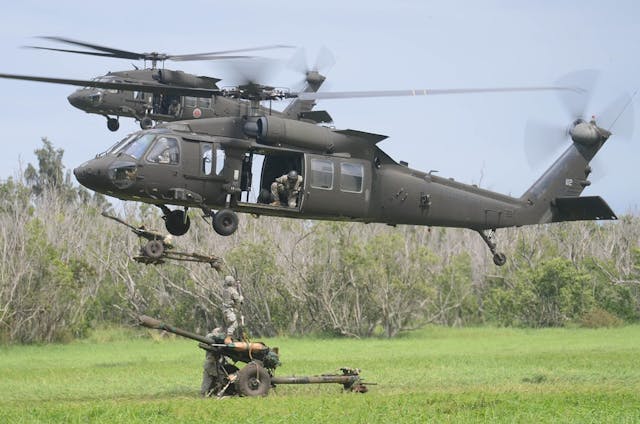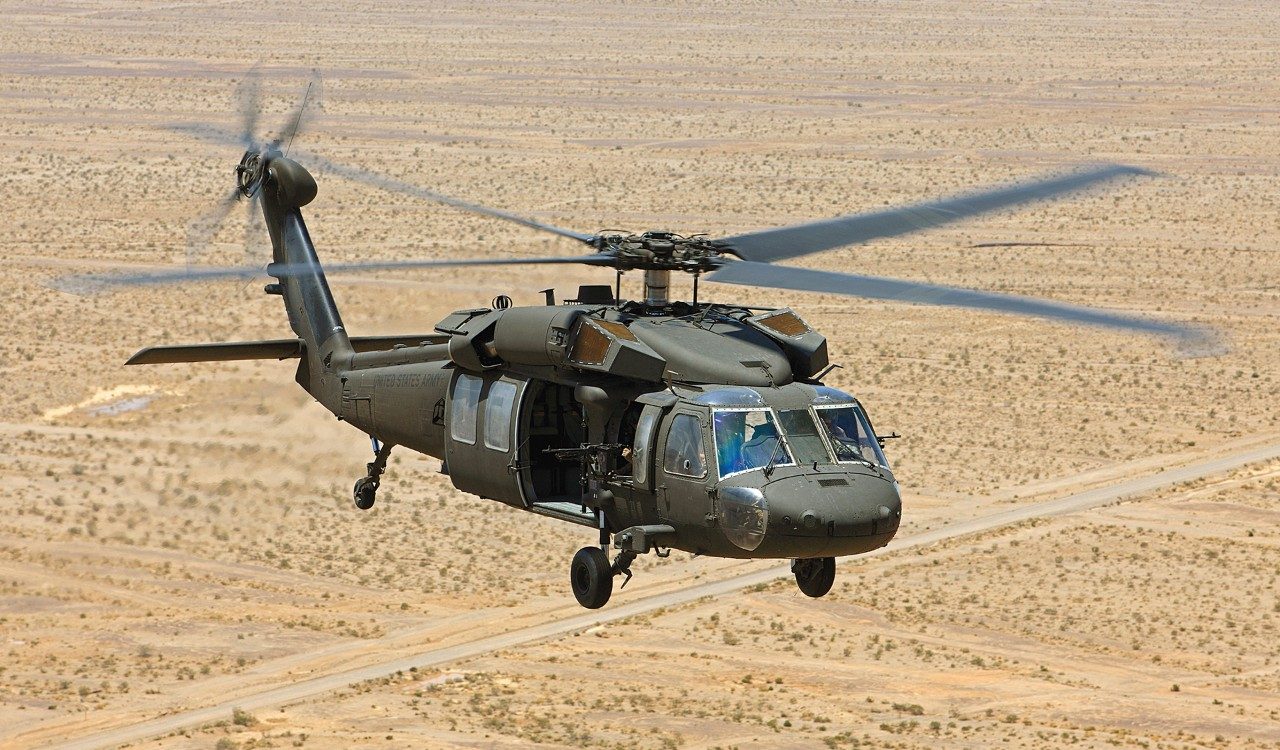UH 60 Black Hawk: From Concept to Modern Day Applications
UH 60 Black Hawk: From Concept to Modern Day Applications
Blog Article
The Impact of Lasting Practices on the Future of Aircraft Procedures and Emissions Reduction
As the aeronautics market deals with raising scrutiny over its environmental impact, the fostering of lasting techniques becomes a crucial pathway toward future aircraft operations and emissions reduction. Advancements in lasting aeronautics fuels and developments in hybrid propulsion innovations stand at the center of this transformation, promising significant reductions in greenhouse gas discharges. The successful integration of these initiatives pivots on a selection of factors, consisting of regulative structures and sector cooperation. The inquiry continues to be: just how will these advancing techniques improve the dynamics of flight and contribute to a more lasting future?

Review of Lasting Practices
Sustainable methods in airplane procedures encompass a series of strategies aimed at minimizing ecological impact while preserving functional performance. These practices are necessary in the aeronautics industry's commitment to lessening its carbon impact and sticking to international environmental requirements. Secret initiatives include maximizing flight paths to lower gas consumption, improving maintenance methods to make sure airplane operate at peak efficiency, and carrying out innovative modern technologies such as winglets and light-weight materials that enhance aerodynamics.

Training and engaging personnel on sustainability techniques also play a crucial role, promoting a society of ecological duty within organizations. Overall, the assimilation of these sustainable methods not only aids decrease discharges however additionally improves the lasting feasibility of the aviation field, ensuring it meets the needs of both consumers and governing bodies while contributing to worldwide sustainability objectives.
Cutting-edge Gas Alternatives
Various cutting-edge gas alternatives are emerging as critical remedies to minimize the air travel sector's reliance on typical nonrenewable fuel sources. Among these options, Sustainable Aviation Fuels (SAFs) have obtained substantial interest due to their possible to decrease lifecycle greenhouse gas discharges by up to 80% contrasted to conventional jet fuels. SAFs are derived from various feedstocks, including waste oils, farming deposits, and also algae, making them a versatile option for the industry.
An additional encouraging choice is hydrogen fuel, which, when utilized in fuel cells, generates only water vapor as a byproduct. This zero-emission possible presents a substantial chance for decarbonizing trip procedures, especially for short-haul flights and regional airplane. In addition, electrical propulsion systems are being checked out, leveraging battery modern technology to power aircraft. While present battery capability restrictions variety and payload, ongoing improvements might soon make electric trips viable for particular applications - uh 60.
Finally, biofuels originated from biomass are being checked out, using an eco-friendly option that can be combined with conventional gas. Collectively, these innovative fuel choices represent an essential step towards achieving a lasting air travel community, lining up with international exhausts decrease targets and improving the market's ecological stewardship.
Technical Advancements in Air Travel

How can technological innovations improve the future of aviation? The combination of advanced modern technologies is critical in changing airplane operations, boosting effectiveness, and decreasing discharges. Technologies such as electric and hybrid propulsion systems go to the leading edge, appealing considerable decreases in gas intake and greenhouse gas discharges. These systems leverage improvements in battery modern technology and power administration, making it possible for airplane to run with a lower environmental impact.
Additionally, the application of sophisticated materials, such as lightweight composites, adds to improved the rules of aerodynamics and fuel performance. The use of fabricated knowledge and artificial intelligence in trip operations maximizes course planning and decreases gas shed by enabling go to my site real-time modifications based upon climate and website traffic conditions. Additionally, the advancement of independent and from another location piloted aircraft systems stands to change cargo and passenger transportation, potentially raising efficiency while lessening human mistake.
Additionally, sustainable aeronautics innovations, including innovative air website traffic management systems, can minimize and improve operations blockage, bring about lower emissions throughout trip. These advancements collectively represent a standard shift in air travel, promising a future where sustainability and functional performance are linked, thereby supporting the industry's commitment to decreasing its ecological influence.

Regulative Framework and Compliance
Because of the growing emphasis on ecological stewardship within the air travel industry, the regulative framework controling aircraft procedures is developing to advertise sustainable practices. Governing bodies, such as the International Civil Aviation Company (ICAO) and different national air travel authorities, are introducing rigorous guidelines focused on decreasing exhausts and improving operational effectiveness.
These regulations often consist of the adoption of Sustainable Aeronautics Fuel (SAF), which has actually been identified as a vital component in accomplishing reduced carbon impacts. Compliance with these policies calls for airlines to implement functional practices and sophisticated innovations, such as optimized flight courses and boosted air website traffic administration, to decrease gas consumption.
Additionally, the enforcement of discharges trading systems and carbon offsetting initiatives is ending up being significantly widespread, engaging airlines to keep track of and report their discharges precisely. Non-compliance can lead to considerable charges, thus pressing operators to prioritize sustainability in their company designs.
Eventually, the progressing governing landscape not just drives innovation and investment in eco-friendly innovations but also fosters a culture of accountability within the aeronautics market. As these frameworks continue to develop, the emphasis on lasting practices will be important to accomplishing the market's long-lasting environmental objectives.
Future Trends in Airplane Procedures
As the aeronautics market adapts to you can try this out an increasingly stringent governing setting, future trends in aircraft procedures are established to concentrate on innovative solutions that further improve sustainability and performance - uh 60. Secret advancements will likely consist of the fostering of innovative air traffic monitoring systems, which make use of real-time data and artificial knowledge to maximize flight paths, lowering fuel intake and emissions
Another significant fad is the enhanced assimilation of lasting aviation gas (SAFs) These alternatives to standard jet fuel, stemmed from sustainable sources, can significantly decrease lifecycle greenhouse gas emissions. The sector's commitment to SAFs will likely speed up as airlines work together with fuel manufacturers to ensure accessibility and cost-effectiveness.
Additionally, the push in the direction of electrification and hybrid propulsion systems is getting energy. Emerging airplane styles will include these modern technologies, offering quieter and a lot more reliable procedures, especially for short-haul flights.
Verdict
The adoption of lasting air travel gas, coupled with developments in hybrid and electrical propulsion systems, is necessary for lessening lifecycle greenhouse gas exhausts. Optimizing flight paths and welcoming ingenious innovations contribute to a quieter and extra eco pleasant air travel field.
Technologies in sustainable aviation gas and advancements in hybrid propulsion modern technologies stand at the leading edge of this transformation, encouraging substantial decreases in greenhouse gas emissions.Many innovative gas options are arising as pivotal remedies to lower the air travel industry's reliance on typical fossil gas - uh 60. Among these alternatives, Lasting Air travel Fuels (SAFs) have actually gotten considerable attention due to their possible to reduce lifecycle greenhouse gas exhausts by up to 80% compared to conventional jet gas.An additional considerable trend is the raised combination of sustainable air travel gas (SAFs) The fostering of sustainable aviation gas, coupled with innovations in electrical and hybrid propulsion her explanation systems, is important for lessening lifecycle greenhouse gas emissions
Report this page